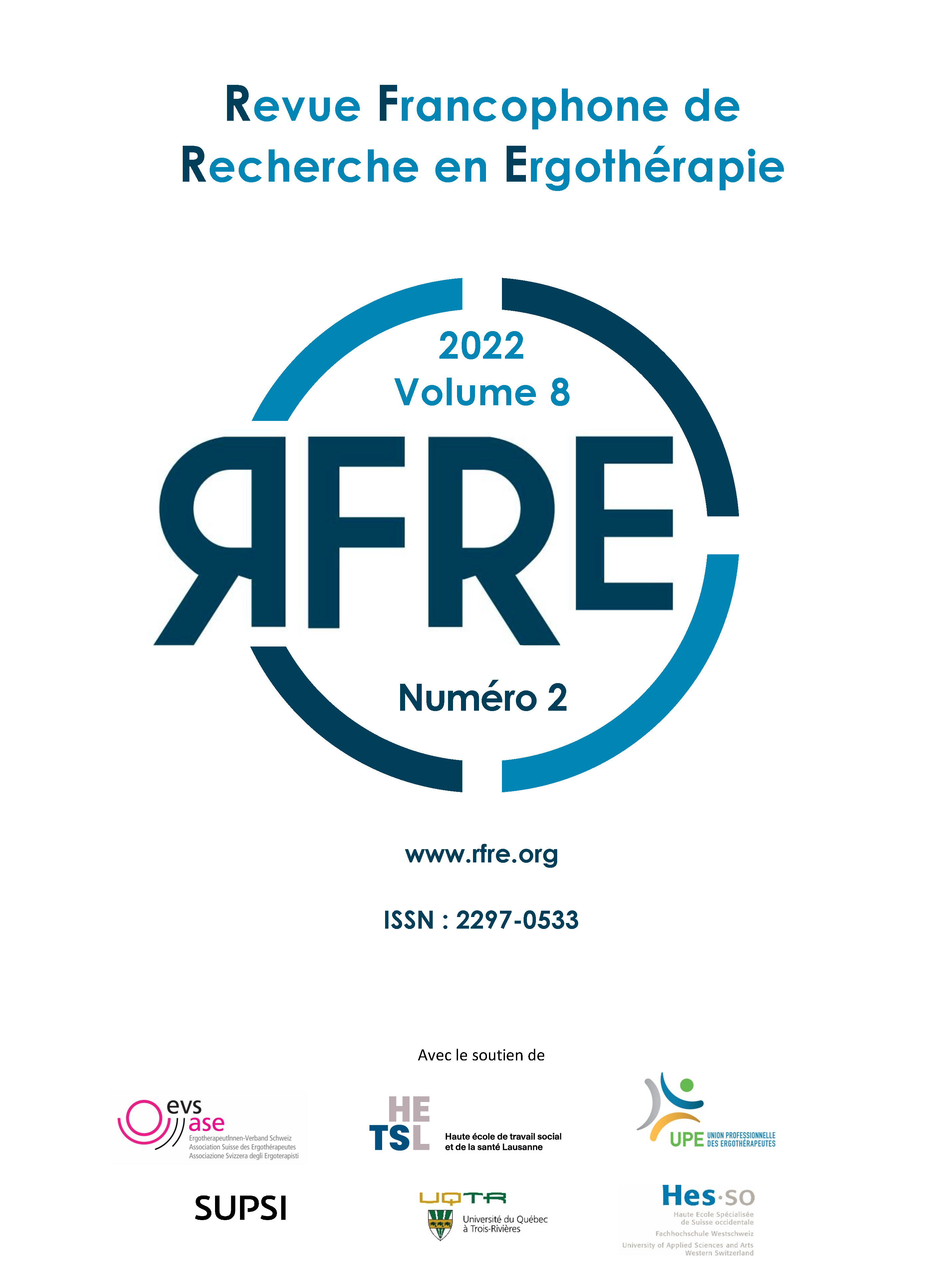EXPLORATION OF THE PROFESSIONAL PARTICIPATION OF PEOPLE WITH A VISUAL DEFICIT IN ROMANDY: A GROUNDED THEORY ANALYSIS
DOI:
https://doi.org/10.13096/rfre.v8n2.184Keywords:
Participation professionnelle, Déficience visuelle, Dévoilement, Professional participation, Visual impairement, DisclosureAbstract
Introduction. According to an estimate by the World Health Organization (WHO, 2012), around 80 million people worldwide are of working age and have a visual impairment. A study conducted in Switzerland found that people who disclose their visual disability are more likely to be laid off or not be hired (Johner-Kobi et al., 2015). To date, few studies have explored facilitators and barriers to participation in work from the perspective of people with visual impairments.
Objectives. This study aims to identify and describe the facilitators and obstacles to participation in work from the perspective of people with visual disabilities and explores the process of disclosing disability in the workplace.
Methods. This study was based on a descriptive interpretative research methodology, semi-structured interviews were carried out with people faced with difficulties in participating in work due to their visual impairment (n = 3 participants). Data analysis was carried out using an anchored theorization analysis method.
Results. The analysis made it possible to identify 15 themes adressed by the participants. The decision-making process for disclosing disability in the workplace has been illustrated with an explanatory diagram.
Conclusion. Occupational therapy interventions would benefit from integrating the analysis of obstacles and facilitators of the professional social environment of the visually impaired person in order to prevent negative effects on participation in work.
Downloads
Published
How to Cite
Issue
Section
License
Copyright (c) 2022 Emilia Green, Clémence Coquoz, Yaël Flach, Marlyse Schmid, Julie Desrosiers

This work is licensed under a Creative Commons Attribution-NonCommercial-ShareAlike 4.0 International License.












